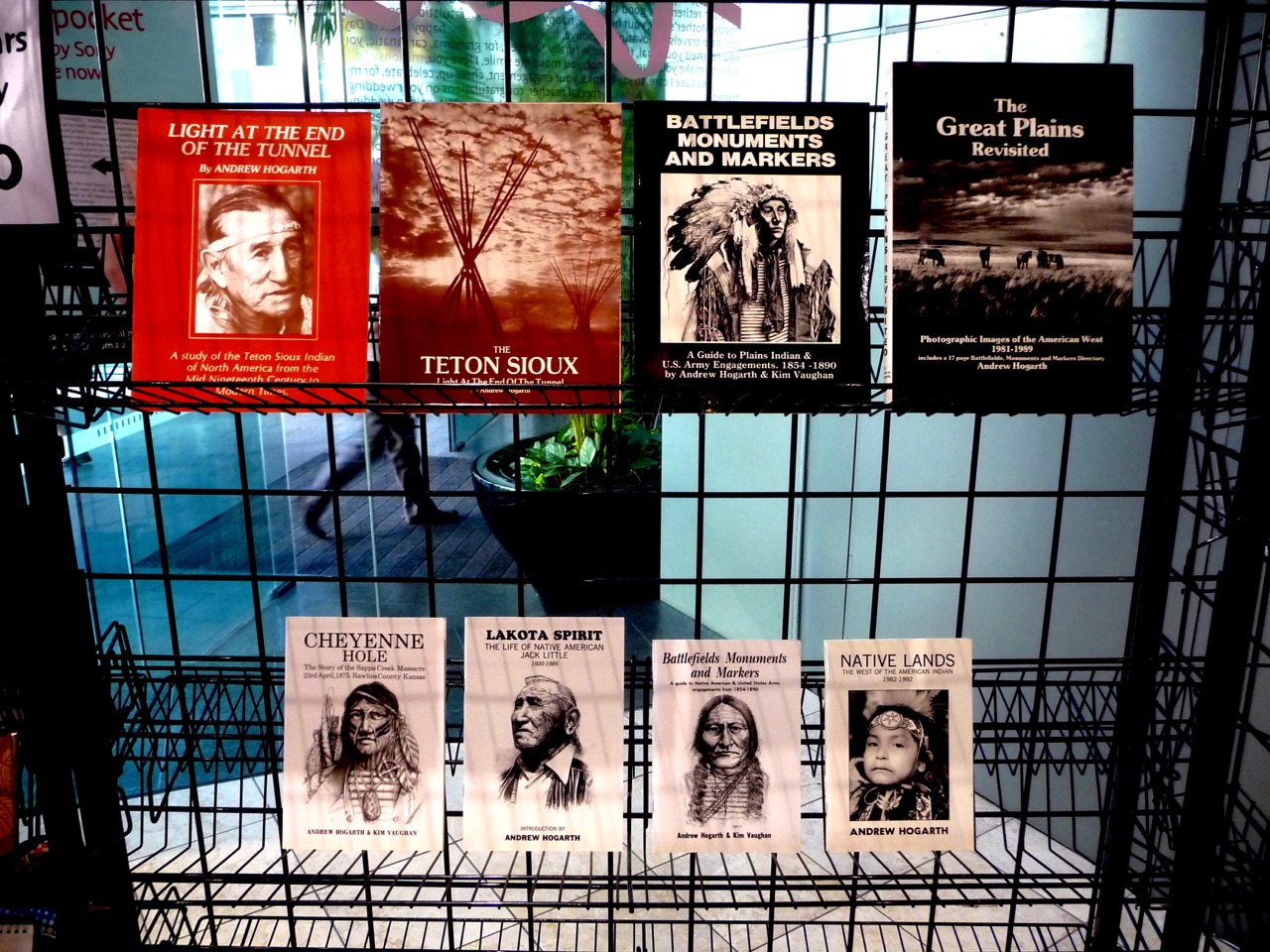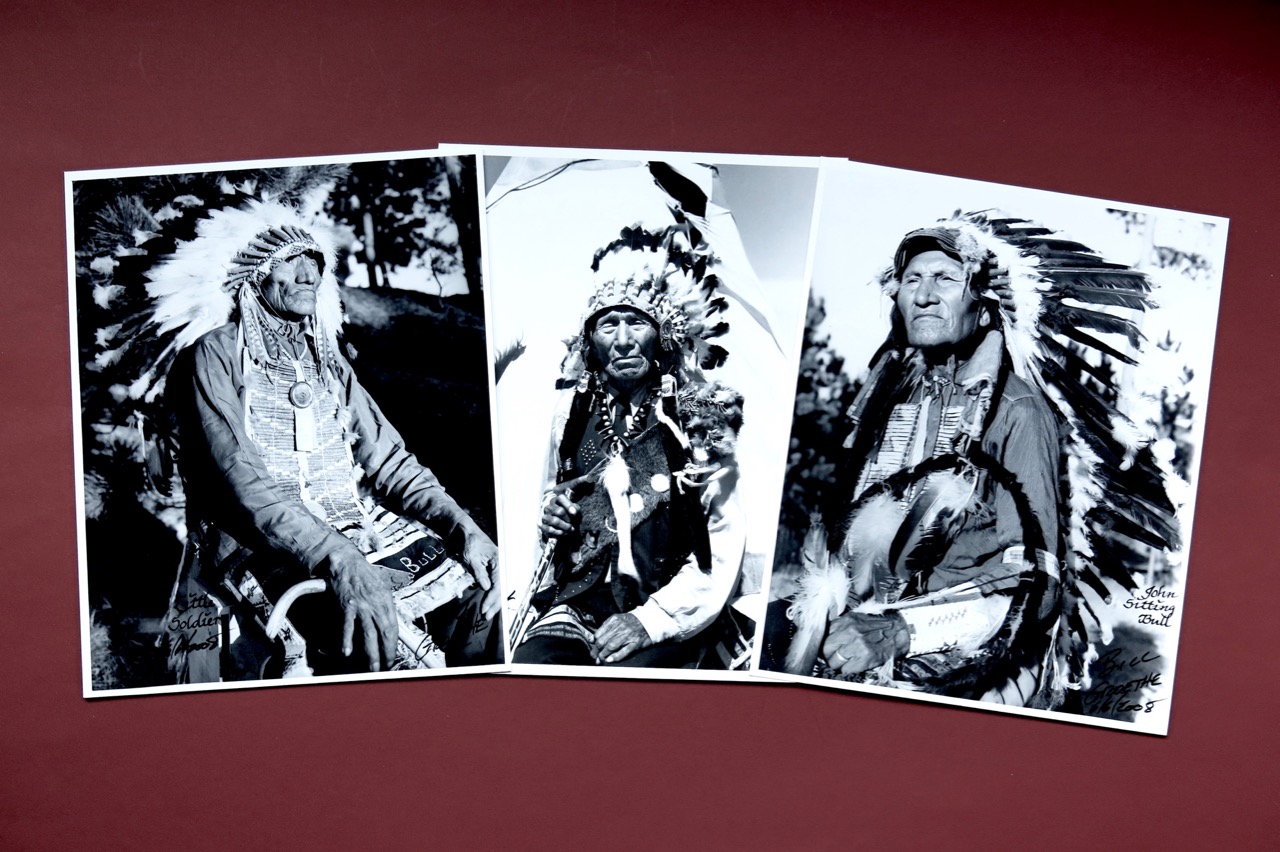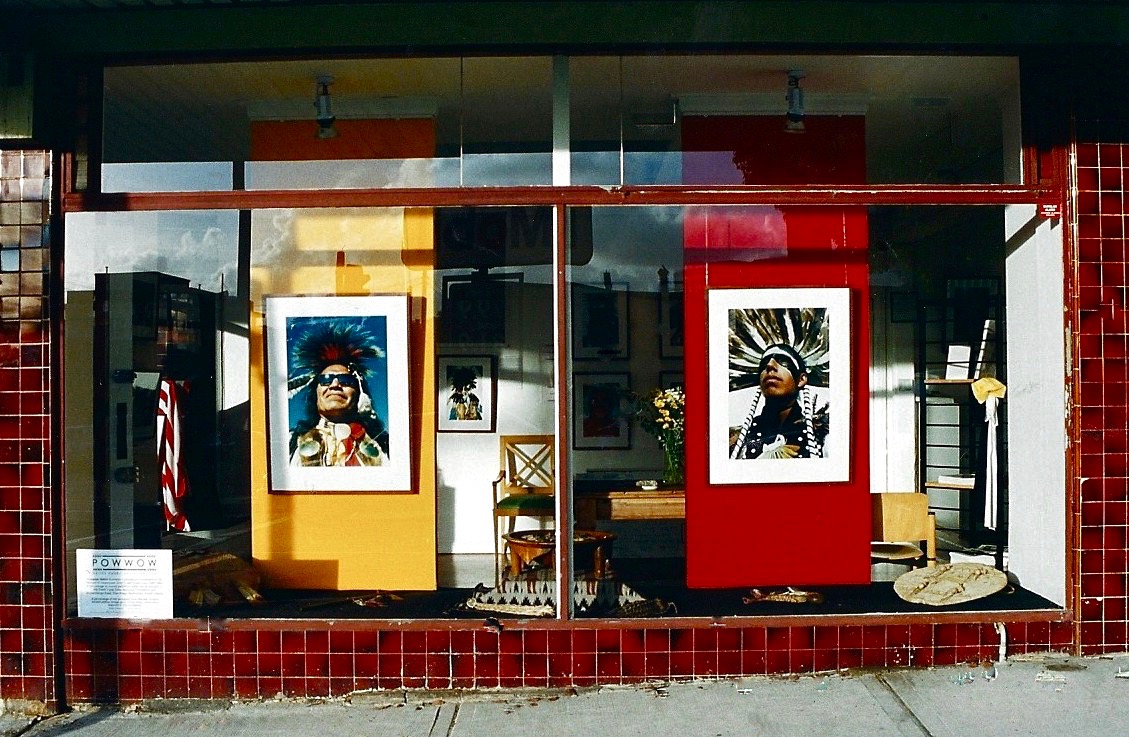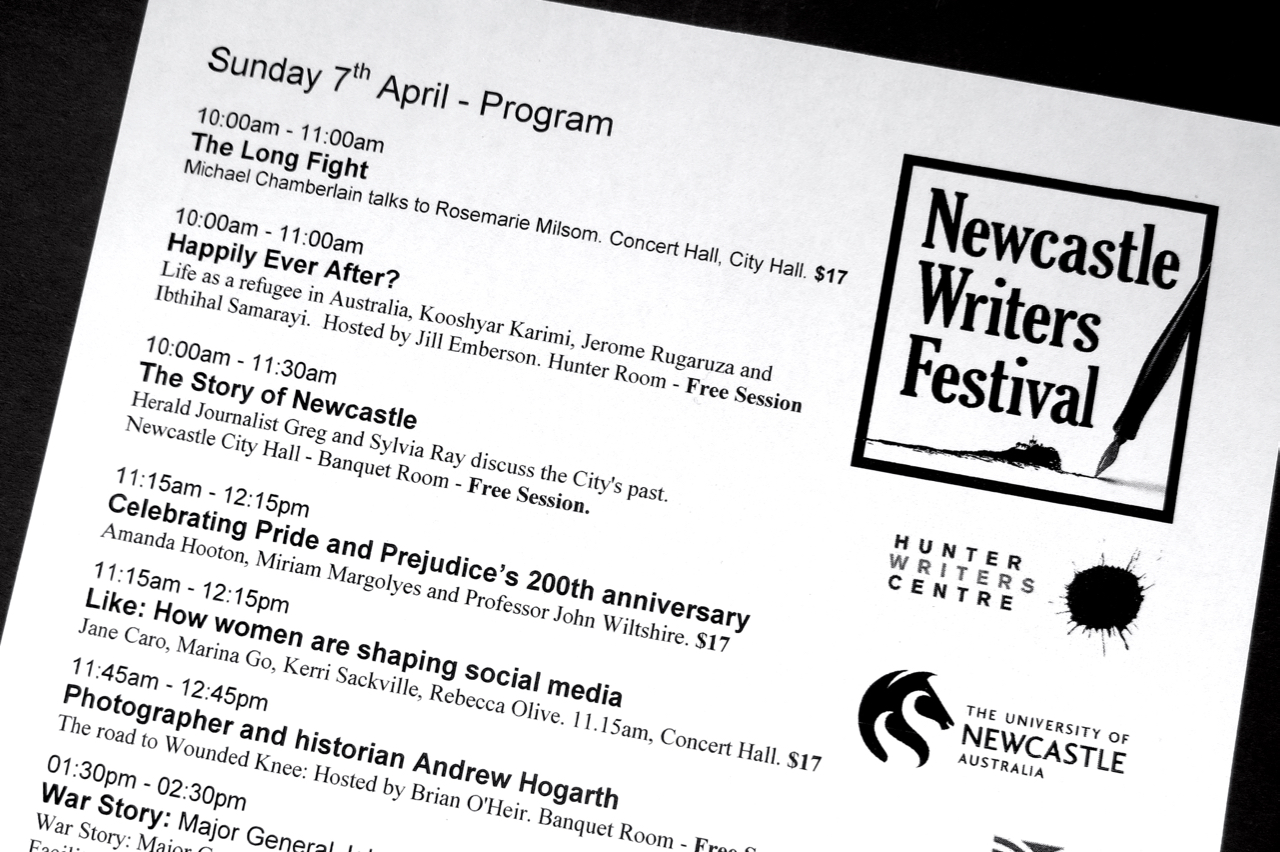
Looking back at over three decades of Andrew Hogarth Publishing is a daunting prospect to say the least. It was truly exciting times driving 200,00 miles and exploring the Great Plains of the United States of America on my seventeen road trips from my initial visit in 1981 and finally the recent trip in 2013. I will always treasure the memories of the three six month book selling ventures in 1985, 1995 and 1996 across the northern and southern plains. And now after thirty-three years it is interesting to look at all the main areas that the artist-storyteller must commit to when trying to get his or hers message out into the public domain hoping to educate and inspire the general public and interested parties of American Indian culture and history.
From my first correspondence with Mrs Ruth Ziolkowski at Crazy Horse Memorial in 1981 I enjoyed exchanging letters for the next quarter of a century with Mrs Ziolkowski. I would always try and promote the memorial when I was in front of the media highlighting my books or exhibitions over the years. It was also at the entrance of the memorials visitor’s centre in late September, 1982 that I first meet my dear friend Oglala-Brule Lakota Jack Little and his American wife Shirley. In 1984 the three of us would collaborate together when I published my first book “Light at the end of the tunnel.” The book included a 10,000 word chapter about Jack’s life journey.
In early 1986 I gave permission to Neil Mangum at the Custer Battlefield in Montana to publish three of my battlefield images in the second yearly issue of the “Greasy Grass Magazine.” This was a huge thrill as my personal interest in the battle stemmed all the way back to when I was a young child on the Scottish Housing Estate in the early 1960’s. I also enjoyed my two visits with Caroline Sandoz Pifer at her Sand Hills home in northwestern Nebraska in 1992 and again in 1999. Caroline a published author like her sister Mari Sandoz was a beautiful storyteller and told of the times she travelled down to the Pine Ridge Reservation with Mari in 1930 to interview Chief He Dog the brother friend of War Chief Crazy Horse.
While researching and exploring the Native American and United States Army battlefields of the Northern and Southern Great Plains during the 1980’s and 1990’s I had the pleasure to listen to the wonderful storytelling of Bill Tallbull the Cheyenne Tribal Historian, Frank Fools Crow the Lakota-Sioux Ceremonial Chief, John Sipes Jr the Southern Cheyenne Chief and Tribal Historian and Joe Medicine Crow the Crow Tribal Historian. In 1990 when Kim Vaughan and I were researching and writing the “Cheyenne Hole” booklet we brought John Sipes on board to lend his expertise regarding the history of the Cheyenne from Oklahoma. The published booklet was held in high regards by local museums in the area and in 1991 the Last Indian Raid Museum in Oberlin, Kansas asked permission to print the booklet for sale at their museum bookstore.
Trained in graphic reproduction from the mid 1960’s I enjoyed being able to layout and design each book that I published. In the early 1990’s it was a real buzz when a new creation was delivered by M.A.P.S. Litho in Frenches Forrest on Sydney’s North Shore. I would hand deliver the book to people living in the local suburbs in Sydney who had signed up to support the cause of a struggling artist by ordering to buy a signed copy. This pavement pounding resulted in five hundred book sales in under one month. Later I would pack and airfreight my excess print runs to Los Angeles on three occasions in 1985, 1995 and finally in 1996. It was a difficult process keeping the books from being damaged although the end result of three six month trips driving around selling the books was extremely rewarding. It total I sold around 20,000 copies of my six books with two second editions in Australia and the USA from 1984 to 1996.
During the 1990’s I corresponded with Lynn Beideck-Porn at the University of Nebraska and Donald L. DeWitt at the University of Oklahoma archiving the books for student research. The publications were also sent out to the main holding centers in Australia with copies donated to the National Library in Canberra, the State Library of New South Wales and the University of Sydney. In the summer season of 1995 while selling the books to museums and bookstores in the USA I stopped at the Red Cloud Indian School on the Pine Ridge Reservation and I left twenty copies of “Lakota Spirit” with Fr. William G. McKenney as a gift from Jack, Shirley and myself. I repeated this kind gesture the following week when I visited the Standing Rock College on the Standing Rock Reservation and left a further twenty copies with Mary Bianco-Welte the Tribal/College Librarian. It was important that the young Lakota school children knew about the life and times of their elder Jack Little and his positive spin on life as a Native American searching for the balance of living in two worlds.
During the book selling trip of 1995 I bumped into Bill Groethe a fellow photographic/artist at his downtown store in Rapid City, South Dakota. Meeting Bill was one of those rare “Hands of Time” moments when one is researching the Sioux Wars of 1876-1877. As a young budding photographer working for Bell Studios in Rapid City in 1948 Bill was assigned by his boss to attend a event at Custer State Park in the Black Hills that honoured the last nine Lakota-Sioux veterans from the Battle of the Little Bighorn in 1876. With a smile on his face Bill said that shooting images of the old warriors was to this day one of the highlights in his long and distinguished photographic career. He told me that “There wasn’t much talk; I clicked the shutter as the old men stood quietly in their traditional regalia.
I look at these black and white images today and I see courage and leadership. It’s history we could have lost.” Bill said that the images were actually misplaced for over forty years and had only resurfaced in 1990 when the wife of his old boss at Bell Studios phoned Bill shortly after the death of her husband and informed Bill that she had a series of photographs that belonged to him. I have continued to keep in touch with Bill when I am in the Rapid City area and from time to time I will phone from Sydney, Australia and ask how he and his wife Alice are keeping.
When the book publishing and distribution was completed at the end of the summer season on the Great Plains in 1996 I set about the task of highlighting the photographic images in exhibitions once again in Australia and the USA. I had developed three collections for exhibiting, Native Lands: The West of the American Indian, Battlefields, Monuments and Markers and Powwow: Native American Celebration. The first two collections had various showings at museums and galleries in Wyoming and South Dakota. Native Lands which had debuted at the Michael Podles Graphis Fine Art Gallery in Woollarha in Sydney in April, 1994 was selected by Jackson Hole Museum Curator Joanne Bird to be exhibited at the museum during the international prestigious Fall Arts Festival during the month of September, 1996.
The third collection Powwow: Native American Celebration debuted at the Graphis Gallery in Sydney, Australia in 1997 and twelve months later it was selected by a panel of Exhibits USA museum curators for a three year national tour of the country. It was indeed a huge thrill to be one of only fourteen artists picked from around the world in early 1998. The Powwow exhibit was booked out in less than eighteen months with forty-one institutions vying for the twenty-one slots over a three year period.
The highlight of the tour on a personal level was the opening showing at the Dr. Martin Luther King Jr, National Civil Rights Museum in Memphis, Tennessee in late October, 2000. I continued to travel the Great Plains region after the creative process with Exhibits USA was done and dusted in late June, 2000. I returned back to the Great Plains on five more road trips from 2006-2011 and I continued shooting quality images of the interesting people I meet along the way with my old tried and trusted Olympus OM 20 film cameras.
In early 2008 I was approached by Katarina Cvitkovic and asked would I consider exhibiting my photographs at St. Vincent’s Hospital in Sydney, New South Wales, Australia as part of their “Healing Arts Program.” I decided to hang a twenty-five year retrospective of my film work and in June/July of that year I exhibited Great Plains: The American West Retrospective 1981-2006. The exhibition was a huge success with the doctors, staff and patients at the hospital and I was pleased that the Sydney Morning Herald and the Sunday Telegraph highlighted the event with extensive coverage in the front sections of their newspapers.
I had also started working with digital cameras in 2008 and when I was asked to exhibit for a second time at St. Vincent’s Hospital in January/February, 2013 I decided to introduce my Native America Great Plains digital photography to the general public. The exhibit was titled Native America: Dinetah to the Greasy Grass 2008-2013 and once again the exhibit was well received by all who worked at the hospital.
In 2012 I was asked by Mathew Ody from Blackhawk Publishing in Tasmania if I would consider having my story published in his new magazine “Australian Journey.” I agreed and in January, 2013 the second edition of the magazine was published across three states of Australia with the publication printing one of my tepee images on its front cover and a ten page spread with two stories and images. At that particular time I was recovering from a major operation and I chuckled at the thought when I flicked through this beautiful coffee table magazine that main players in the arts like Cate Blanchett’s Sydney Theatre Company and the Cirque du Soleil Performance Group could only muster four and eight pages respectively. It was indeed a triumph for the dedicated long term effort of the independent artist.
I received a phone call from Rosemarie Milson in early 2013 asking if I would like to speak about my travels and images at the inaugural Newcastle Writers Festival. Rosemarie worked for the Sydney Morning Herald in 2003 had interviewed me for a article to be published in the “Sunday Life Magazine.” It was now time to return the favor as a caring thoughtful artist and spread the word about how I viewed Native America over the decades of traveling the Great Plains region of the USA to interested parties who would attend the April event. It was also a huge honour to be one of only sixty writers and artists booked to speak from across Australia.
If there is one personal situation that sums up the body of work I have created over the decades would be the time that I was speaking with my friend Bill Villhaber the operations manager at Pack and Send in Bondi Junction. A young musician who was in the shop overheard much of our conversation regarding the books, music and exhibitions. And as I was leaving the shop after completing my business the young man asked if I happened to be born into money. At first I was a touch angry at his suggestions but as I walked home I started to take his cut to the chase question as a compliment.
It is certainly not a easy life as a working artist and to obtain the credibility for my work over the years has certainly had its ups and downs. Working permanent part-time and full time manual jobs for fourteen years when my personal artistic workload was dictated by outside influences it not a easy route to sometimes travel along. I was fortunate that the books and photographs that I published and created along the way had found a passionate audience and as such I was able to supplement my income to carry on with each new project I had in the pipeline at that particular time.
Thirty-two years is a long stretch if one is just working the standard forty hour week job. And to carry ones passion for a particular subject in my case the recent history of the Lakota-Sioux and Cheyenne Indian Wars on the American Great Plains for a similar period of time is an amazing feat in itself. If there is one last act of giving it is the completion of my new website which went active in 2012. I hope the stories and the powerful and soulful images I have created with my Native American friends since 1981 that are included on the website continue to inspire and educate interested parties who click the switch and surf the worldwide web.
It was indeed a interesting and rewarding journey finding the true heart and soul of Native America. The black and white television series of the late 1950’s and early 1960’s are now a distant memory. And I am pleased in the knowledge that the truth about what happened when two cultures clashed for control of a continent has now been documented by many fellow writers and artists in recent times. Today Native Americans are integrated throughout American society and work in many top level professions. And their cultural ways and customs are still strong and thriving and they are being passed down to the younger generations.





